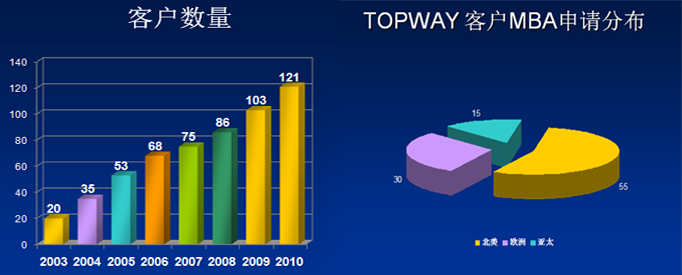GWD30-Q22 to Q25:
While acknowledging that there are greater employment opportunities for Latin American women in cities than in the countryside, social science theorists have continued to argue that urban migration has unequivocally hurt women’s status. However, the effects of migration are more complex than these theorists presume. For example, effects can vary depending on women’s financial condition and social class. Brazilian women in the lowest socioeconomic class have relatively greater job opportunities and job security in cities than do men of the same class, although there is no compelling evidence that for these women the move to the city is a move out of poverty. Thus, these women may improve their status in relation to men but at the same time may experience no improvement in their economic standing.
In addition, working outside the home, which is more common in urban than in rural areas, helps women in the lowest socioeconomic class make contacts to extend exchange networks—the flow of gifts, loans, or child care from those who currently have access to resources to those who do not. Moreover, poor women working in urban areas actively seek to cultivate long-term employer-employee relations. When an emergency arises that requires greater resources than an exchange network can provide, these women often appeal for and receive aid from their wealthy employers. However, the structure of many poor women’s work—often a labor force of one in an employer’s home—makes it difficult for them to organize to improve their economic conditions in general.
Not surprisingly, then, Latin American women in the lowest socioeconomic class differ in their opinions about the effects of urban migration on their lives. Some find urban living, with access to electricity and running water, an improvement and would never return to the countryside. Others, disliking the overcrowding and crime, would return to the countryside if there were work opportunities for them there. Thus, urban life has had both negative and positive impacts on women’s lives. In general, urban migration has not provided economic prosperity or upward mobility for women in the lowest socioeconomic class, despite their intelligent and energetic utilization of the resources available to them.
明明承认拉丁美洲妇女在城市比在农村有更多的就业机会,社会科学家还争辩说城市的移民确实破坏了妇女的地位。然而,移民带来的影响比这些理论家们设想要复杂的多。例如,这些影响取决于妇女的财务状况和社会地位。在社会底层的巴西妇女比同城的同一阶层的男人有相对更多的就业机会和就业保障,当然没有确切证据表明,这些妇女来到城市确实摆脱了贫穷。因此,这些妇女相比较同阶层的男人而言有一些改善,但也许并没有改善她们的经济地位。
此外,在外工作在城市比在农村常见,在外工作可以帮助社会底层的妇女扩大交际范围,比如礼物,贷款,或儿童看护等等,这些信息就从知道的人那里传到不知道的那里。此外,这些在城市工作的贫穷妇女积极寻求培育长期雇佣的关系。当出现紧急情况,所需的资源不是一个交际网络可以提供时,这些妇女常常向她们的有钱的雇主诉苦,并能得帮助。但是,往往是一个雇主家只有一个妇女工作,这种工作结构使她们难以组织起来改善其经济条件。
当然,社会底层的拉丁美洲妇女对待城市移民生活对她们生活影响的看法各有不同。有些在城市里过上有电和自来水的生活,这样的改善让他们再不愿回到农村。有些不喜欢拥挤和犯罪,如果在农村能找到工作便愿意回去。因此,城市生活对妇女有消极和积极影响。总体来讲,尽管她们的智慧和精力全耗在城市了,但移民到城市并没有未社会底层的妇女带来任何经济上的富足或者社会地位的提高。
Q22:
In the first paragraph, the author refers to the experiences of Brazilian women most probably in order to
A. support an earlier assertion made by social science theorists about the effects of urban migration
B. provide an example of one area in which urban migration has failed to improve Latin American women’s lives
C. substantiate the claim that the effects of urban migration cannot be easily characterized t
D. illustrate the effect that urban migration has had on the economic status of Latin American women
E. compare the effect that urban migration has had on the economic status of Latin American women with its effect on the economic status of Latin American men
Q23:
Which of the following best summarizes the main point of the passage?
A. Although Latin American women disagree about the effects urban migration has had on their lives, they agree that migration has provided them with greater opportunities for stable employment outside the home.
B. Although urban migration has improved the quality of life for Latin American women, it has weakened the social support systems that these women enjoyed in rural communities.
C. The effects that urban migration has had on Latin American women’s lives are complex and are best evaluated in light of a range of issues concerning Latin American women’s overall quality of life. t
D. The effects of urban migration in Latin America are different for men than they are for women because of the relatively greater job opportunities and job security enjoyed by women in urban areas.
E. Urban migration has led to an increasing disparity between the economic prosperity of Latin American women in the lowest socioeconomic classes and that of women in the higher socioeconomic classes.
Q24:
The author mentions which of the following as a disadvantage of urban employment for Latin American women in the lowest socioeconomic group?
A. It is difficult for these women to obtain reliable, long-term employment.
B. It is difficult for these women to organize effectively in order to obtain better wages. t
C. It is difficult for these women to find employers who are supportive when emergencies arise.
D. The structure of their jobs makes it difficult for these women to participate in exchange networks.
E. Working in urban areas makes these women more vulnerable to health problems than they would be in rural areas.
Q25:
The author of the passage would most likely agree that the opinions of the Latin American women discussed in the third paragraph (lines 60-85) are influenced by the
A. fact that urban life has provided them with greater opportunities for upward mobility than did rural life
B. relative importance they place on the benefits of urban exchange networks in comparison to those of rural networks.
C. relative importance they place on the conveniences and drawbacks of urban life in comparison to those of rural life
D. difference in the effects of urban migration on women of higher and lower socioeconomic classes
E. difference in the effects of urban migration on men and women of the same social and economic class
答案:ccbc.不过据说问题有改动。
| 

